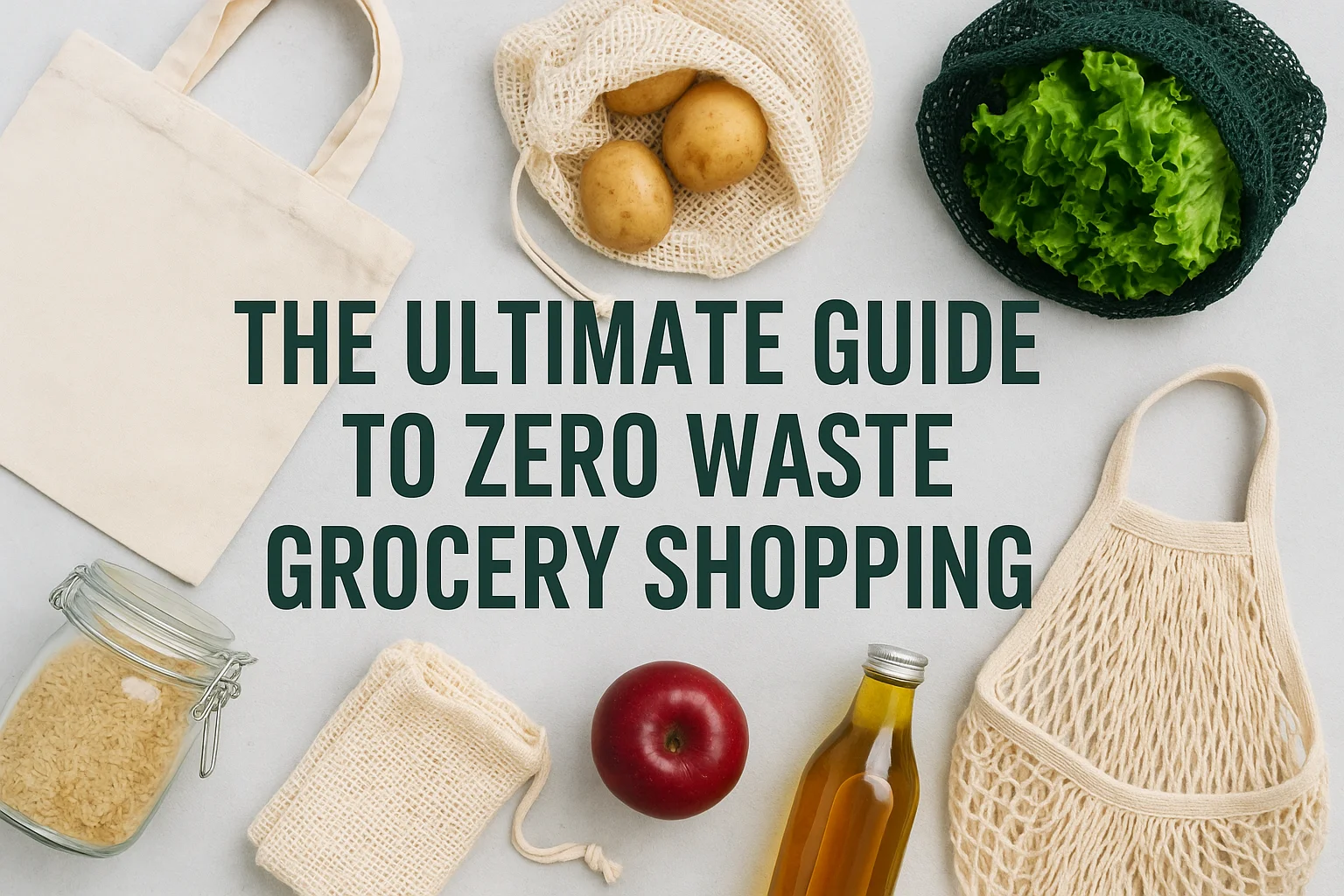Zero waste grocery shopping isn’t just a trend — it’s a lifestyle shift that helps you cut packaging waste, save money, and make healthier choices. Whether you’re a beginner or already on your eco-journey, this guide will walk you through everything from planning your list to storing your groceries at home — without generating unnecessary waste.
Why Zero Waste Grocery Shopping Matters
Every year, millions of tons of single-use plastic packaging end up in landfills or oceans. Grocery shopping is one of the biggest contributors — think of plastic produce bags, shrink wrap, and disposable containers.
By adopting zero waste grocery habits, you:
- Reduce landfill waste and plastic pollution
- Support local businesses that offer sustainable products
- Save money by buying only what you need
- Encourage brands to adopt eco-friendly packaging
Example: In 2024, a small community in The Netherlands reduced plastic waste by 35% simply by switching to bulk stores and reusable containers for grocery shopping.

Step-by-Step: How to Shop Zero Waste
1. Plan Your Grocery List
Zero waste shopping starts before you even leave home.
- Check your pantry so you don’t overbuy.
- Write a clear list of what you need, including quantities.
- Group items by store section (produce, grains, dairy, etc.) to save time.
Pro Tip: Use a reusable paper notebook or a phone app like Notion or AnyList to avoid disposable paper slips.
2. Choose the Right Shopping Bags and Containers
Skip single-use plastic. Instead, bring:
- Cloth tote bags for groceries
- Mesh produce bags for fruits and veggies
- Glass jars or stainless-steel tins for bulk goods
- Reusable bottles for liquids like oil or milk
| Item | Best Zero Waste Alternative | Why It’s Better |
|---|---|---|
| Plastic grocery bag | Cotton or jute tote bag | Washable, long-lasting |
| Disposable produce bag | Organic cotton mesh bag | Breathable and reusable |
| Plastic milk jug | Glass bottle from local dairy | Refillable and recyclable |
| Bulk bin plastic bag | Mason jar or stainless-steel container | Eliminates disposable packaging |
3. Shop at Zero Waste-Friendly Stores
Look for:
- Bulk food stores where you can bring your own containers
- Farmers’ markets with local, unpackaged produce
- Co-ops that support sustainable farming and offer refill stations
Real Example: Marqt in Amsterdam allows customers to refill pasta, grains, nuts, and even cleaning products directly from dispensers.
4. Buy in Bulk
Buying in bulk cuts down on packaging and often saves money. Common bulk items:
- Rice, oats, pasta, and lentils
- Nuts, seeds, and dried fruit
- Coffee beans and tea leaves
- Spices and herbs
When shopping in bulk:
- Weigh your containers first (tare weight)
- Label with the product code to speed up checkout
5. Prioritize Fresh, Local, and Seasonal Produce
Buying local produce means:
- Less transportation emissions
- Fresher food with better flavor
- Less need for packaging
Example: Instead of imported strawberries in winter, buy local apples or pears — they require less energy to store and transport.
6. Avoid Single-Use Packaging
Even in regular supermarkets, you can make better choices:
- Choose loose produce instead of pre-packed
- Opt for cardboard or glass over plastic
- Buy larger quantities to reduce overall packaging
7. Store Your Groceries the Zero Waste Way
How you store food at home affects waste, too.
- Use beeswax wraps instead of cling film
- Store leafy greens in a damp cloth inside a container
- Freeze leftovers in reusable silicone bags
Pro Tip: Keep older food in front of your fridge shelves so you use it first — a simple trick to cut food waste.
Read more : 10 Simple Tips to Make Your Shopping More Sustainable

Common Challenges (and How to Solve Them)
| Challenge | Solution |
|---|---|
| Bulk stores are far away | Stock up on essentials during fewer trips; supplement with local markets |
| Forgetting containers | Keep an “emergency set” of jars and bags in your car or backpack |
| Higher upfront cost of reusables | Start small — invest in 1–2 items at a time until your kit is complete |
Extra Tips for a Smooth Zero Waste Grocery Trip
- Shop during off-peak hours to avoid crowds and have more time to weigh and fill containers.
- Talk to store staff — they often welcome zero waste shoppers and may offer discounts for reusable packaging.
- Track your waste reduction — seeing your progress keeps you motivated.
Conclusion
Zero waste grocery shopping isn’t about perfection — it’s about progress. Every time you choose a reusable bag, refill a jar, or skip plastic packaging, you’re voting for a cleaner planet. Start with small changes, stay consistent, and inspire others along the way.
Quick Zero Waste Grocery Checklist
- Reusable tote bags
- Mesh produce bags
- Glass jars / stainless containers
- Bulk store list
- Refillable bottles
Read more : Top 15 Zero Waste Swaps You Can Make This Month
FAQ’s
It’s a way of buying groceries without creating unnecessary waste, by using reusable bags, containers, and buying in bulk instead of packaged goods.
Yes! You can choose loose produce, opt for cardboard or glass packaging, and bring your own reusable bags and jars.
Not usually. Buying in bulk often saves money, and reusable items pay for themselves over time.


